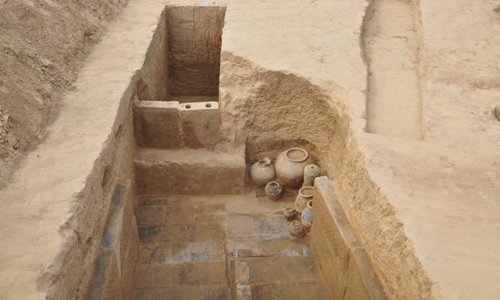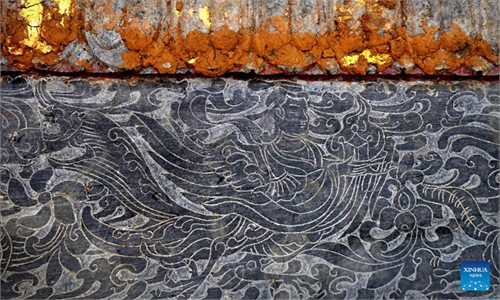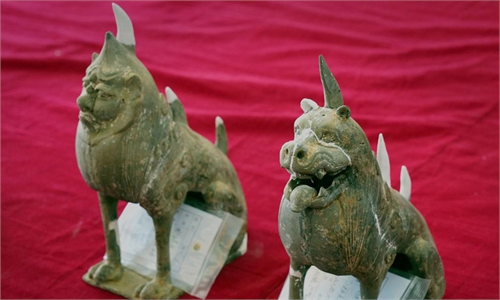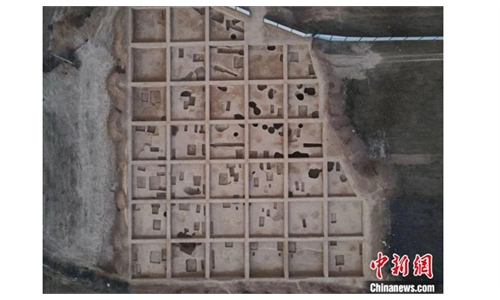ARTS / CULTURE & LEISURE
1,400-year-old royal tomb of Northern Zhou founding emperor discovered in Shaanxi

Photo: Xinhua
A tomb dating back to more than 1,400 years ago was recently found in Xianyang, Northwest China's Shaanxi Province. The site was identified as the tomb of Yuwen Jue, the founding emperor of Northern Zhou (557-581) period; a historical regime from the Northern and Southern Dynasties (386-589).Although evidence indicates that the tomb had previously been robbed, a total of 146 burial objects, mainly pottery figurines, were still unearthed. The pottery figurines show people holding shields, soldiers on horseback or camel carrying goods.
Archaeologist Wang Meng told the Global Times that pottery figurines are the "most common funeral objects" in Northern Zhou tombs. Such figurines were relatively small and often depicted animals and human beings.
An epigraph of the tomb owner was discovered at the east side of the tomb entrance. It was a square shaped stele engraved with standard script characters revealing the owner was the Northern Zhou's first emperor, who died in the 10th month of the "Northern second year" (558) and was buried under the title of "Duke of Lueyang."
Zhao Zhanrui, an assistant researcher at the Shaanxi Academy of Archaeology, said that knowing Yuwen Jue was buried under the title of "Duke of Lueyang" allows people to look into the "political and social changes" of the Northern Zhou period. The excavation project was led by the Shaanxi Academy of Archaeology.
Historian Fang Gang told the Global Times that Yuwen Jue was titled as the Duke of Lueyang when he was a child. He lived a very short life of 15 years, during most of which he was manipulated as a puppet by Yuwen Hu, the nephew of his father Yuwen Tai.
It is the second Northern Zhou tomb ruin discovered in the province. The other tomb was the Xiao mausoleum, also in Xianyang. It belonged to Yuwen Jue's brother Yuwen Yong.
The tomb was found in an area crowded with high-level tombs built during the Northern Dynasties to the Sui (581-618) and Tang (618-907) dynasties. The excavation indicates that the surface of the tomb was originally surrounded by a ditch. The tomb faces south with the back to the north and is considered a classic medium-size Northern Zhou tomb.
Xue Ruiming, a Chinese archaeologist, told the Global Times that the "ditch" design was quintessential to Northern Zhou tomb architecture. As a ditch for the deceased was considered the same as walls in a living person's home, this represents the idea that those who passed away were being treated with the same respect as when they were alive, according to Xue.
"Treating the dead with the same respect as the living also shows the Chinese philosophy behind burial traditions," Xue noted.
Northern Zhou tombs are not exclusive to Shaanxi. In Guyuan, Northwest China's Ningxia Hui Autonomous Region, the tomb of Lixian, excavated in 1985, was also a Northern Zhou site that caused a sensation.
The tomb was found to belong to the governor of the Yuanzhou prefecture, the ancient name for Guyuan. More than 300 treasures, including murals and pottery figurines, were discovered alongside rare relics like Persian gold gilded silver pots and Lapis lazuli stone rings imported from Central and Western Asia.
"They are also an emblem of the China-West cultural exchanges that were carried out in the Northern Zhou period," Wang told the Global Times.



